Coronavirus COVID-19 Daily Update 2nd April 2020

Coronavirus COVID-19 Daily Update 2nd April 2020
This update will be published daily at 12pm GMT and aims to provide clinicians and the public with an overview of the latest data, guidelines, key publications and policy around COVID-19, with links to essential resources and information.
If you are a healthcare professional, please join the discussion on these latest COVID-19 cases on MedShr:

Please post any COVID-19 cases, images or learning points from your clinical practice on MedShr - share key knowledge and experience with a global network of doctors to help improve patient care. Include #COVID19 in your case title.
Please email COVID@medshr.net if you have any data, publications or information you would like to share.
Global Impact of COVID-19 to Date
As of 2nd April 10:00 (GMT)
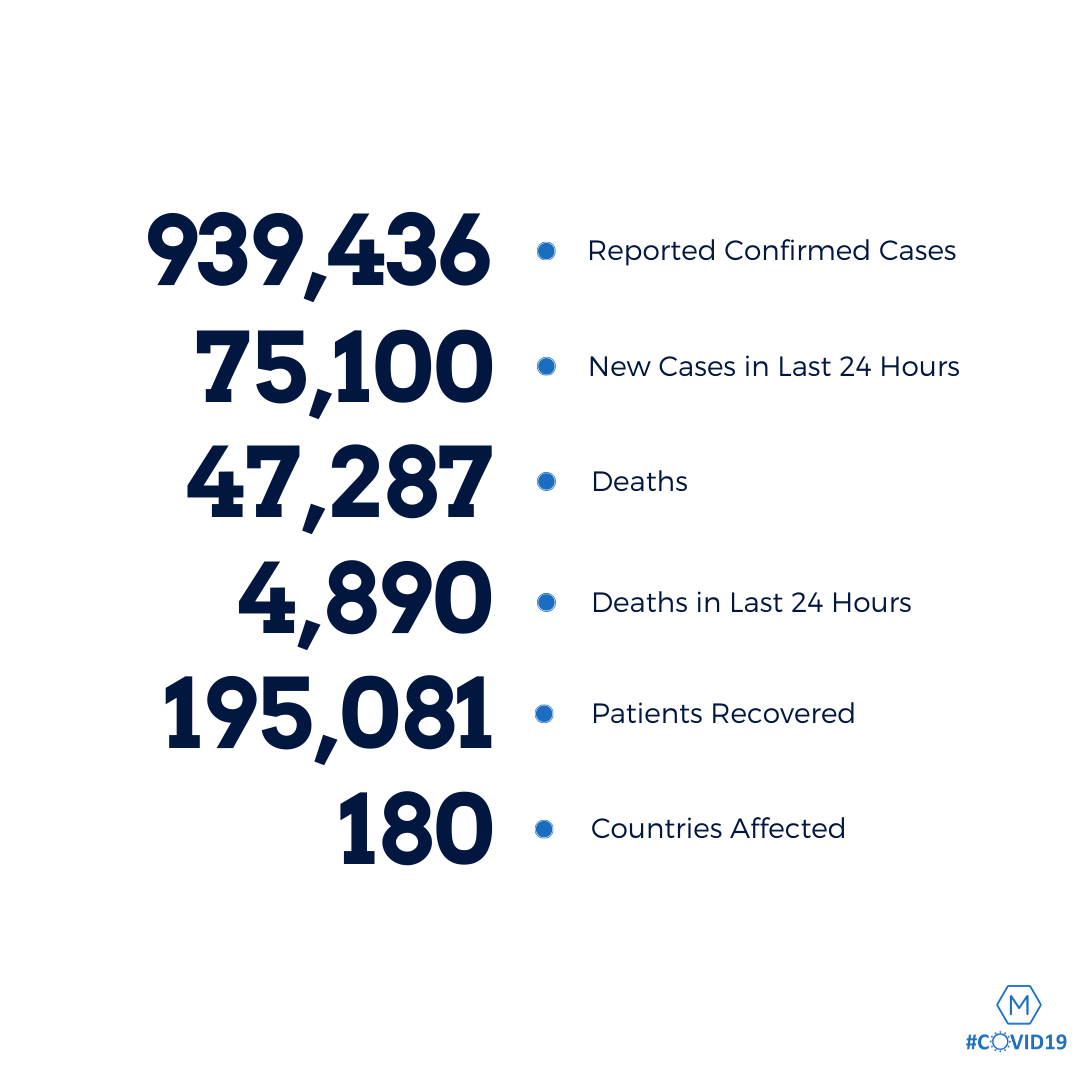
COVID-19 Cumulative Global Cases
As of 1st April 09:00 (GMT)

Source: World Health Organisation
COVID-19 Global Active Cases Map
As of 2nd April 10:00 GMT
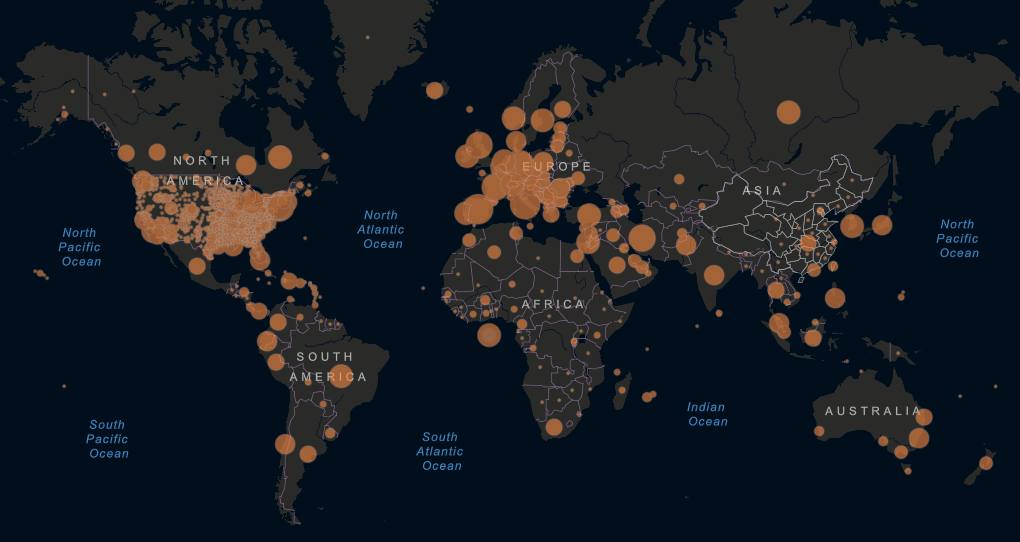
Total UK COVID-19 Cases
As of 1st April
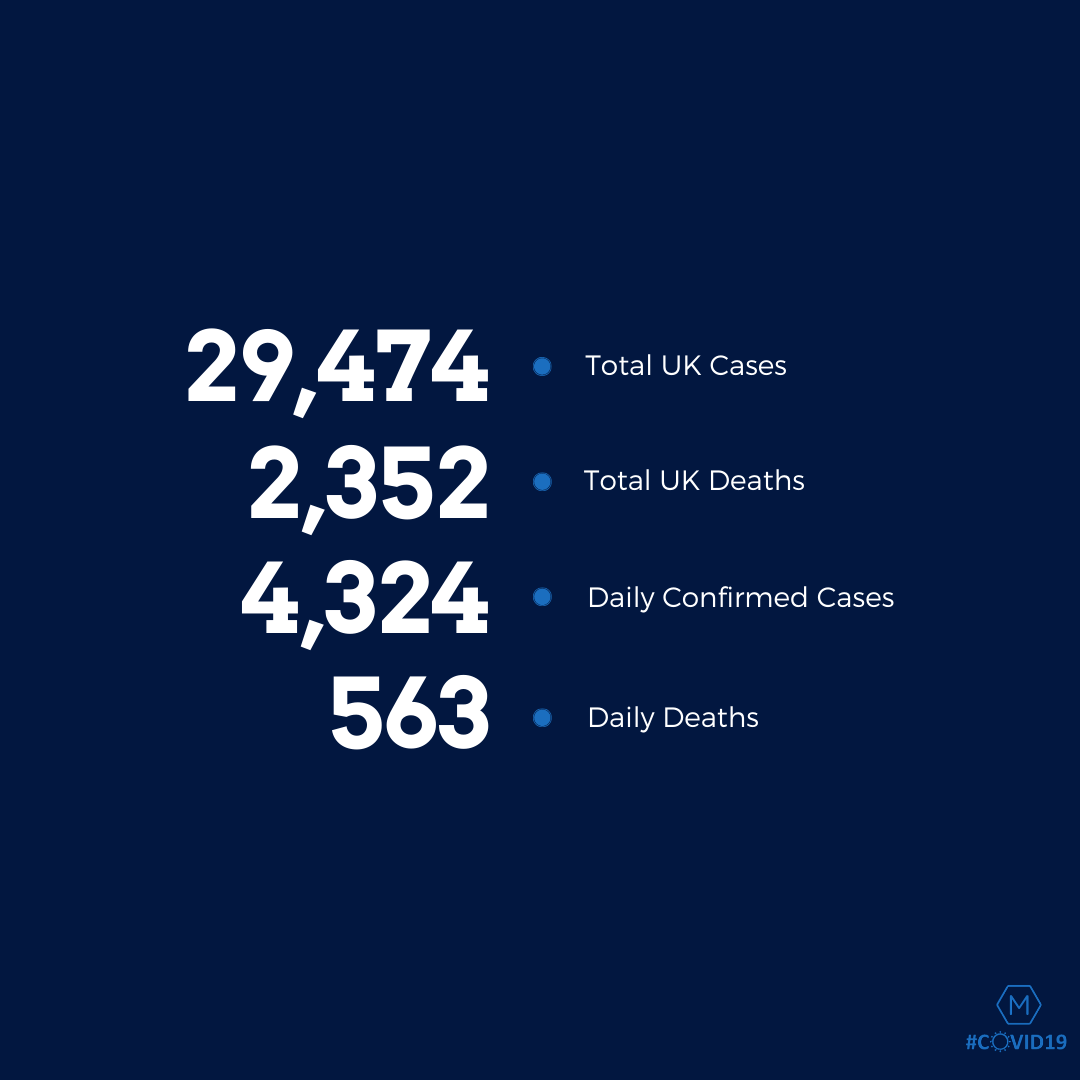
Source: Public Health England
COVID-19 Cumulative UK Cases
As of 1st April
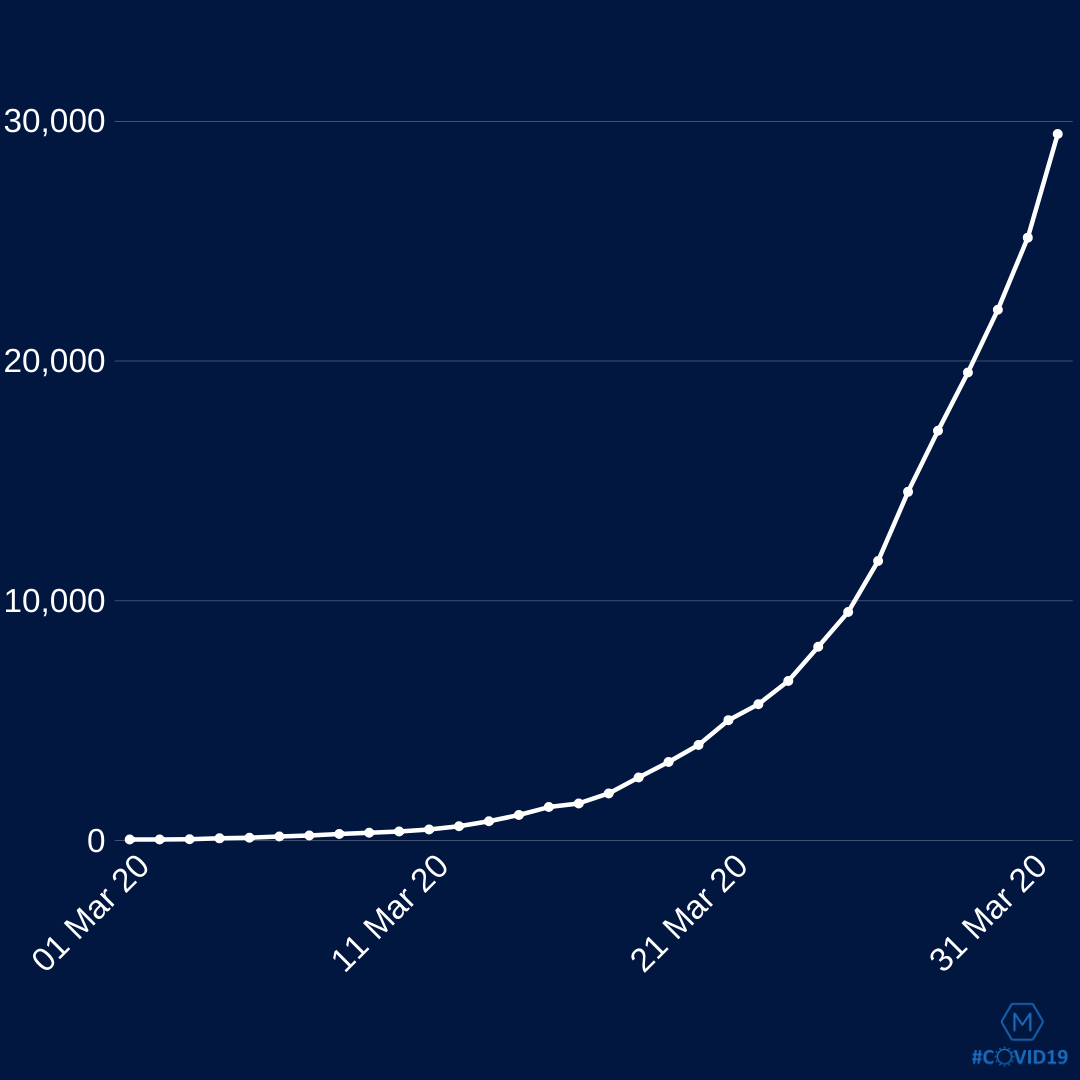
Source: Public Health England
COVID-19 Daily UK Cases
As of 1st April
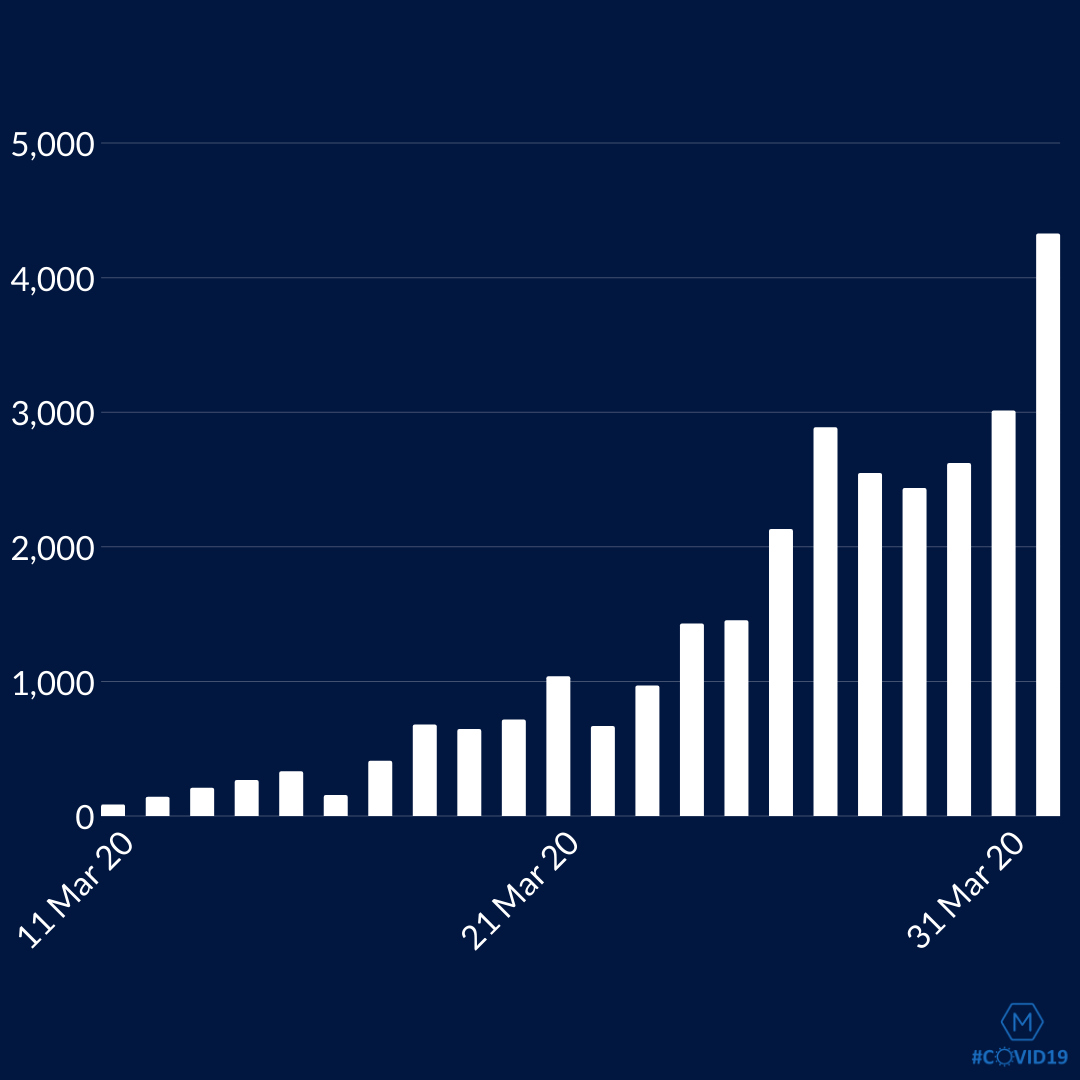
Source: Public Health England
Latest Developments
Three new countries/territories/areas reported cases of COVID-19 in the past 24 hours: Botswana, Burundi, and Sierra Leone.
WHO recognizes the importance of addressing the needs of refugees and migrants when preparing for or responding to the COVID-19 pandemic
Coronavirus deaths and nationwide lockdowns:
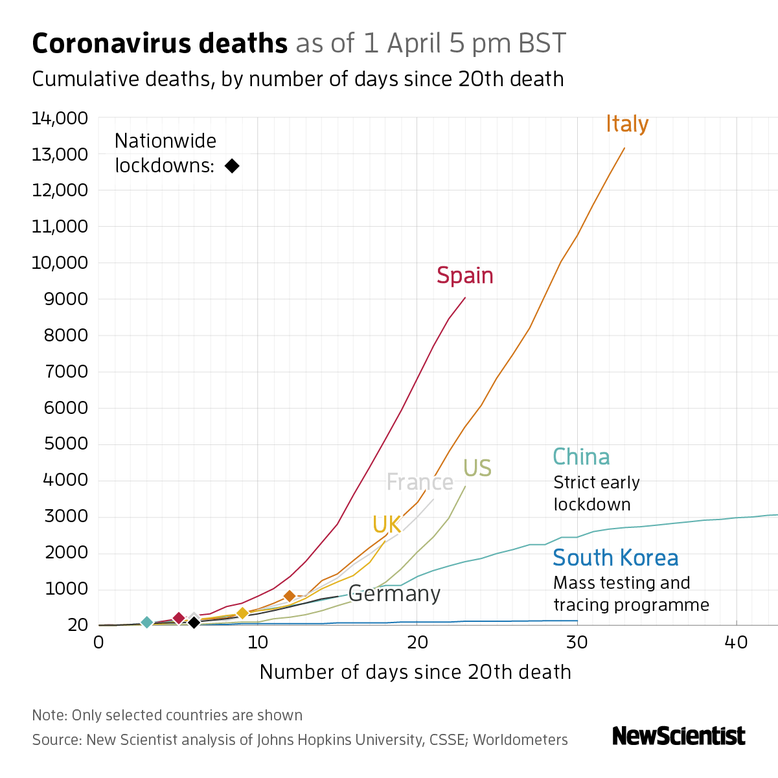
Source: New scientist
Timeline of new confirmed cases worldwide

Source: Financial Times
USA
Coronavirus situation in US
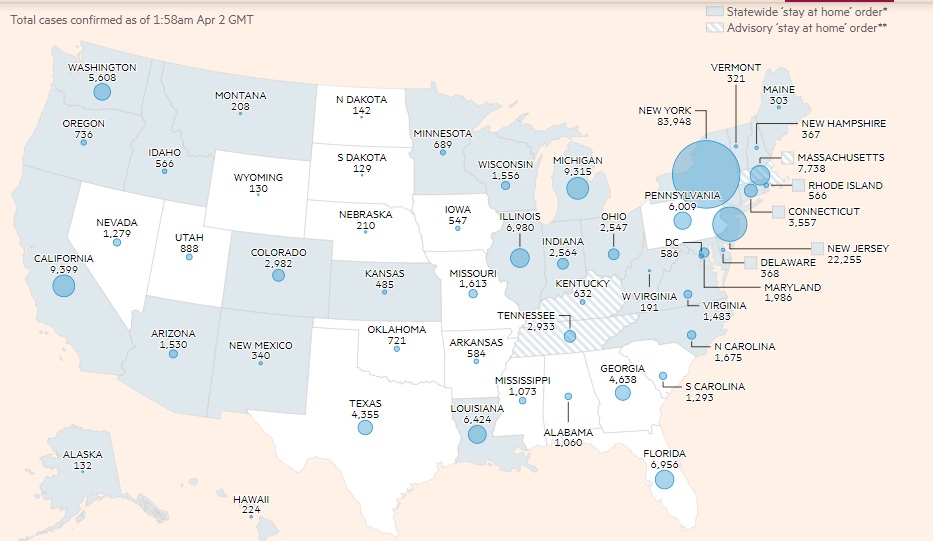
Source: Financial Times
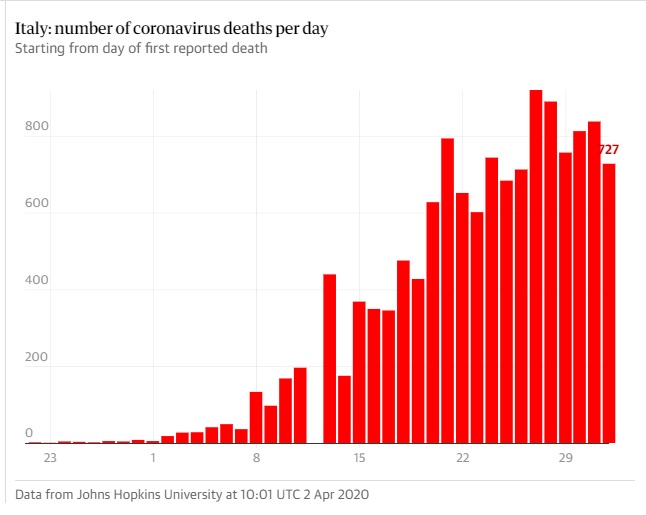
Source: The Guardian and Johns Hopkins
Spain
Spain's Health Staff Are Catching The Coronavirus As Protective Gear Runs Short
Covid-19 workers in Spain: 'You can feel the fear in the air'
Latest COVID-19 Publications
Some key recent publications to be aware of:
Can routine laboratory tests discriminate SARS‐CoV‐2 infected pneumonia from other causes of community acquired pneumonia?
Published 31st March
A study of 221 community acquired penumonia (CAP) patients and 84 COVID-19 patients found COVID-19 patients had significantly lower mean values for total white cell count, neutrophils, eosinophils, lymphocytes, monocytes, red cell distribution width, platelet count, and PCT than patients with CAP. COVID-19 patients had significantly higher mean values for hemoglobin, hematocrit and total protein than CAP patients.
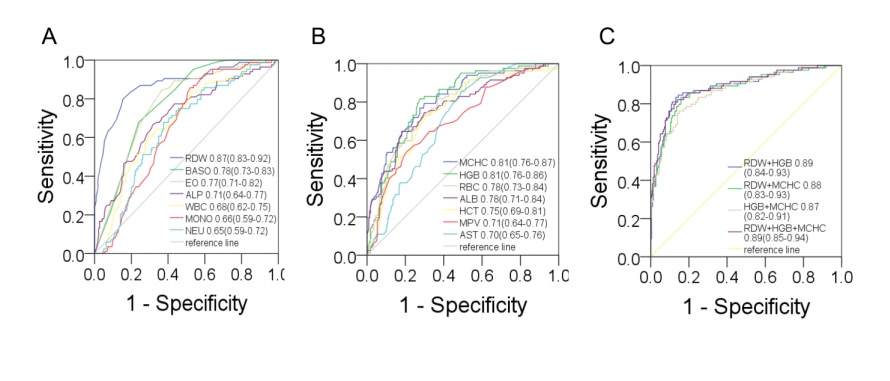
Figure 3. Receiver operator characteristic curves for nine parameters (A), and another six parameters (B), and combinations of the parameters (C), comparing data for CAP patients with that for COVID-19 patients. The ROC curves and AUC (figures 3) demonstrated that RDW, MCHC, and HGB had good discriminatory ability.
Full article
Published by Dr Rachel Coles, Education Fellow and Paediatric Trainee.
Loading Author...
Sign in or Register to comment